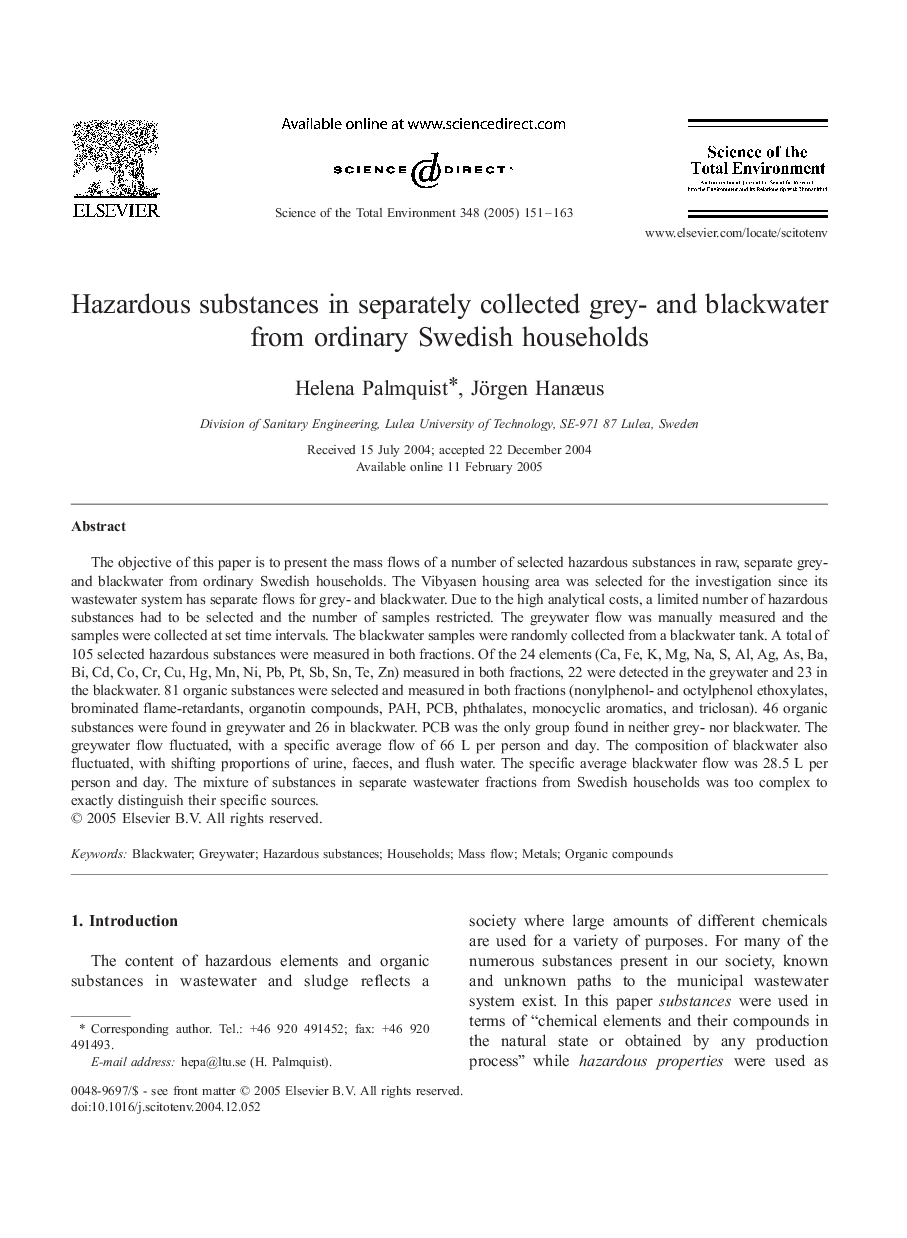| Article ID | Journal | Published Year | Pages | File Type |
|---|---|---|---|---|
| 10110647 | Science of The Total Environment | 2005 | 13 Pages |
Abstract
The objective of this paper is to present the mass flows of a number of selected hazardous substances in raw, separate grey- and blackwater from ordinary Swedish households. The Vibyasen housing area was selected for the investigation since its wastewater system has separate flows for grey- and blackwater. Due to the high analytical costs, a limited number of hazardous substances had to be selected and the number of samples restricted. The greywater flow was manually measured and the samples were collected at set time intervals. The blackwater samples were randomly collected from a blackwater tank. A total of 105 selected hazardous substances were measured in both fractions. Of the 24 elements (Ca, Fe, K, Mg, Na, S, Al, Ag, As, Ba, Bi, Cd, Co, Cr, Cu, Hg, Mn, Ni, Pb, Pt, Sb, Sn, Te, Zn) measured in both fractions, 22 were detected in the greywater and 23 in the blackwater. 81 organic substances were selected and measured in both fractions (nonylphenol- and octylphenol ethoxylates, brominated flame-retardants, organotin compounds, PAH, PCB, phthalates, monocyclic aromatics, and triclosan). 46 organic substances were found in greywater and 26 in blackwater. PCB was the only group found in neither grey- nor blackwater. The greywater flow fluctuated, with a specific average flow of 66 L per person and day. The composition of blackwater also fluctuated, with shifting proportions of urine, faeces, and flush water. The specific average blackwater flow was 28.5 L per person and day. The mixture of substances in separate wastewater fractions from Swedish households was too complex to exactly distinguish their specific sources.
Related Topics
Life Sciences
Environmental Science
Environmental Chemistry
Authors
Helena Palmquist, Jörgen Hanæus,
